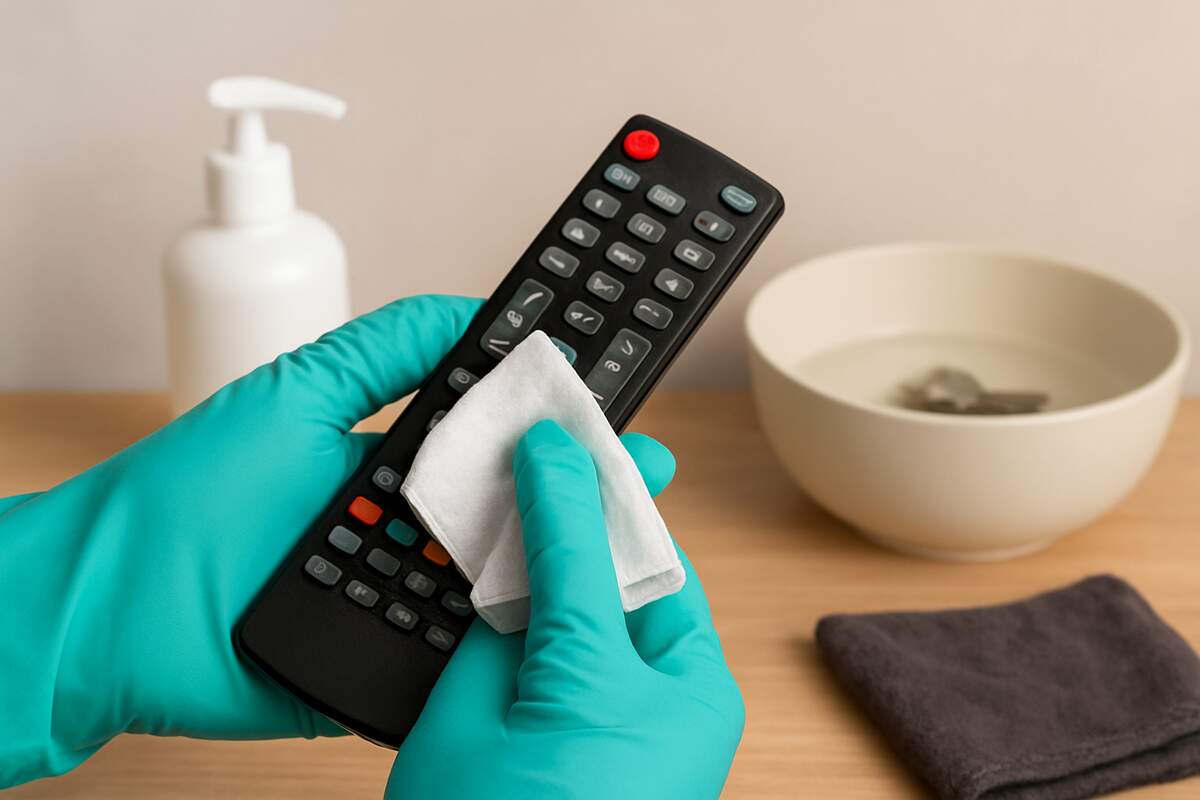How to Spot and Clean Repulsive Items at Home
The last time you washed your TV remote? Or did you go and scrub up your door handles? You may think you’ve cleaned the floors and wiped down the counters, but have you considered those hard-to-reach corners that can get soiled and harbour germs and stains? How many disgusting objects do we touch in one day without even noticing how disgusting they are?
Our houses could be cleaner, but there are things all around them that make it a bacterial heaven. These lost and forgotten dirt sweepers can easily bypass your cleaning radar, and the worst of it? You apply them everywhere. Wondering what you are missing? Prepare yourself for a mildly gross, yet completely enlightening rundown of the six most gross home items you never noticed out there!
1. TV Remotes and Game Controllers
Do you know what the Invisible Germ Holder in your hands is named?
Consider how frequently you adjust your TV control or play games using the remote controller. So, consider where they have been. Thrown down on the ground? On a wedge between the cushions of the sofa? Being fumbled by greasy hands on a movie night? These objects are some of the most frequently handled things in your house, and at the same time, they are rarely cleaned. So, in this, the bond cleaners in brisbane will help you with a better clean.
Research has found that remote controls harbour more bacteria than a toilet seat. They are sources of contamination, whether it is E. coli or mould spores. And when there is more than one person in your house, and it includes children or visitors, there is a lot of germ swapping going on.
Cleaning Tip: Wipe your remotes and controllers once a week using a disinfectant wipe or a microfiber cloth with a light misting of isopropyl alcohol. And do not forget the gaps between the buttons!
2. Door handles and light switches.
Light switches and door handles need attention as well.
Little Surfaces, Large Germs
You most likely flip light switches both off and on numerous times in a day. This is also applicable to doorknobs and handles all over the house. Nevertheless, despite such high rates of usage, they are usually totally disregarded when cleaning is involved.
They are in regular contact with germs; when they get infected, they can carry bacteria, viruses and dirt, more so during the cold and influenza period. When a person is ill at home, such surfaces turn into little infection distribution points.
Cleaning Tip: These should be sprayed on a cloth and wiped at least once a week, and more often when one of your housemates is sick with a disinfectant.
3. Kitchen Sponges
The Germ Party You Had Not Heard About
The one thing that you use every day to wash your dishes might be the filthiest in your whole house. Kitchen sponges are not only warm and moist, they are absorbent- and as nearly as makes no difference, a first-class luxury resort to bacteria. Millions of bacteria per square inch, such as Salmonella, E. coli and others, can be found in a single sponge.
Most of the other people still use the same sponge throughout the weeks without sanitising and in so doing expose their dishware, countertops, as well as utensils to plenty of germs, instead of learning make your living room cleaner quickly with clever shortcuts to maintain overall hygiene.
Cleaning Hint: To have a fresher sponge, leave it in the microwave for 1-2 minutes. Daily (keep a check on it), or add it to a heated dry cycle of the dishwasher. Once every week to two weeks, replace your sponge.
4. Toothbrush Holders
The Stains of Toothpaste are more than Toothpaste.
When we think of changing our toothbrushes, most people just forget about the holder in which we keep them. Unluckily, such a tiny container may collect a combination of water, toothpaste drips, and even backflow of your toilet in case it is too close, thus serving as a habitat for mould, mildew, and bacteria.
The sink is one of the most filthy areas in the bathroom, as several studies show, and in fact, it beats the toilet seat in the number of germs it contains at times.
Green tip: Clean your toothbrush container with hot, soapy water or put your container in the dishwasher once a week. In case it is ceramic or metal, a toothbrush and disinfectant should be enough to complete the job.
5. Reusable Grocery Baggages
Environment-Friendly and Bacteria-Radiating
Reusable bags are fantastic for the environment; however, they are not good when you never wash these reusable bags. These shopping bags contain raw fruits and vegetables, meat, milk, etc. and are then shoved into the car boot, laid down on the kitchen floor or put away in an old dusty cupboard. The result? Bacterial buildup and cross-contamination.
It has the potential to drip raw meat juices into the fabric, due to which mould could start growing in it when wet and folded when dirty.
Cleaning Note: The reusable bags, which are made of fabric, should be loaded into the washer regularly, at least once a week. Whenever you have used them, clean the shiny plastic or nylon (preferably with antibacterial wipes or in soapy water).
6. Bowls and Pet Toys
The Favourite Germ Place of Your Furry Friend
We treat our pets like family, but we all know that some of the items they own are downright disgusting. Slobber, dirt, and bacteria become absorbed by pet toys, in particular soft ones. On the contrary, when the water and food bowls are not frequently cleaned, they can be slimy and have biofilm.
This may cause accumulation of bacteria like Salmonella and Staph; not only will your pet’s health be threatened, but so will yours.
Cleaning Tip: A Bowl containing food and water is supposed to be washed with hot water and soap every day. Toys: place in the washing machine (or the dishwasher, first) or cleanse with pet-safe cleaning chemicals.
Wrapping Up
You can wipe the floor and counters to your satisfaction, but it does not mean that you need to neglect the germ hot zones that are sometimes not that obvious. The incorporation of these overlooked items in your cleaning schedule helps you do the job of making your home healthier and safer. By taking a couple of more minutes, a person will prevent the buildup of bacteria. Hence, wear those gloves, pick up that disinfectant drink, and focus on each corner, whether big or small. — just like professional bond cleaning Perth experts would do.


